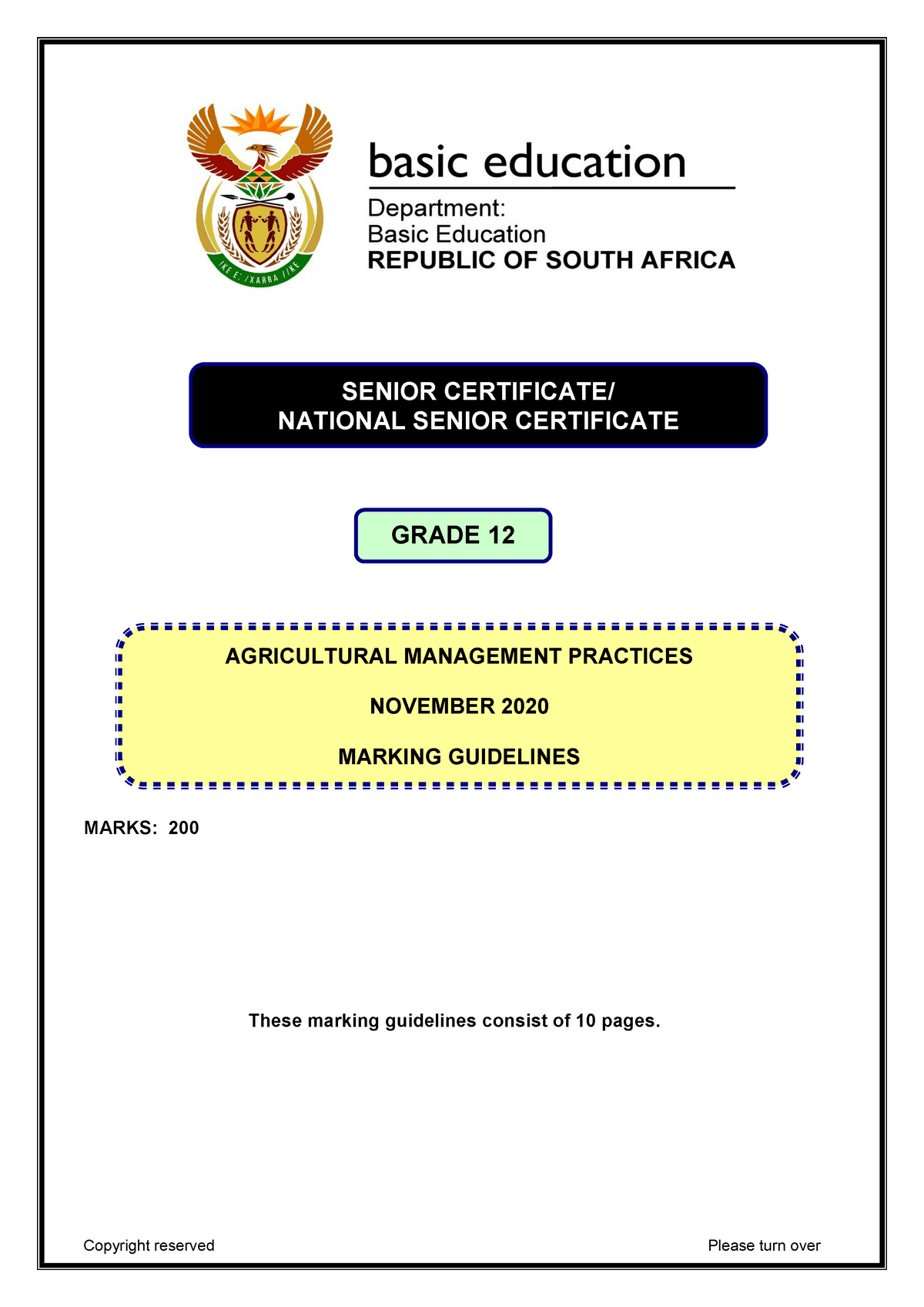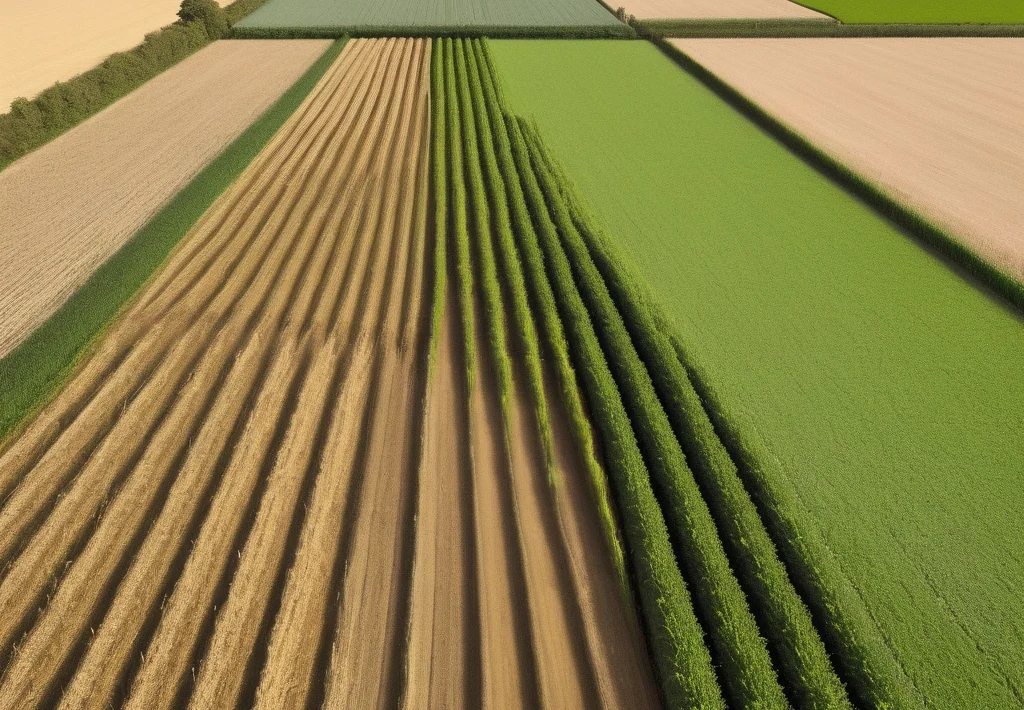
Agricultural Management Practices: Past Exam Papers and Memos for Grade 9 in South Africa
Introduction
Agricultural management practices play a crucial role in ensuring the sustainability and productivity of agricultural systems in South Africa. Grade 9 learners are introduced to these practices as part of their Agricultural Sciences curriculum. Past exam papers and memos provide valuable resources for students to prepare for their examinations and reinforce their understanding of the subject matter.
Past Exam Papers
Paper 1
Section A: Multiple Choice (20 marks)
Which of the following is NOT a benefit of crop rotation?
(a) Reduced soil erosion
(b) Improved soil fertility
(c) Increased pest and disease resistance
(d) Increased water retentionThe practice of planting different crops in the same field in a planned sequence is known as:
(a) Intercropping
(b) Crop rotation
(c) Monoculture
(d) Alley croppingWhich of the following is a method of soil conservation?
(a) Contour plowing
(b) Strip cropping
(c) Mulching
(d) All of the aboveThe process of adding organic matter to the soil to improve its fertility is called:
(a) Composting
(b) Fertilization
(c) Irrigation
(d) LimingWhich of the following is a type of irrigation system?
(a) Drip irrigation
(b) Sprinkler irrigation
(c) Flood irrigation
(d) All of the above
Section B: Short Answer (30 marks)
- Describe the advantages and disadvantages of monoculture.
- Explain how crop rotation can help to control pests and diseases.
- Discuss the importance of soil conservation practices.
- Describe the different methods of irrigation and their advantages and disadvantages.
- Explain the role of organic matter in soil fertility.
Paper 2
Section A: Multiple Choice (20 marks)
Which of the following is a factor that affects the choice of crop to grow?
(a) Climate
(b) Soil type
(c) Market demand
(d) All of the aboveThe practice of growing crops and raising livestock on the same land is known as:
(a) Mixed farming
(b) Intensive farming
(c) Extensive farming
(d) Organic farmingWhich of the following is a benefit of mixed farming?
(a) Reduced risk of crop failure
(b) Improved soil fertility
(c) Increased biodiversity
(d) All of the aboveThe process of selecting and breeding animals with desirable traits is called:
(a) Artificial insemination
(b) Genetic engineering
(c) Animal husbandry
(d) Veterinary scienceWhich of the following is a type of livestock management system?
(a) Extensive grazing
(b) Intensive confinement
(c) Semi-intensive grazing
(d) All of the above
Section B: Short Answer (30 marks)
- Describe the different factors that affect the choice of livestock to raise.
- Explain the advantages and disadvantages of mixed farming.
- Discuss the importance of animal husbandry practices.
- Describe the different types of livestock management systems and their advantages and disadvantages.
- Explain the role of technology in modern agricultural practices.
Memos
Paper 1
Section A: Multiple Choice
- (c)
- (b)
- (d)
- (a)
- (d)
Section B: Short Answer
Answers may vary, but should include the following key points:
- Advantages of monoculture: High yields, efficient use of resources, reduced labor costs.
- Disadvantages of monoculture: Increased risk of pests and diseases, soil depletion, loss of biodiversity.
- Benefits of crop rotation: Reduced pest and disease pressure, improved soil fertility, increased water retention.
- Importance of soil conservation practices: Prevent soil erosion, maintain soil fertility, improve water infiltration.
- Methods of irrigation: Drip irrigation (water-efficient, reduces evaporation), sprinkler irrigation (uniform water distribution), flood irrigation (simple and inexpensive).
- Role of organic matter in soil fertility: Provides nutrients, improves soil structure, increases water retention.
Paper 2
Section A: Multiple Choice
- (d)
- (a)
- (d)
- (c)
- (d)
Section B: Short Answer
Answers may vary, but should include the following key points:
- Factors affecting choice of crop: Climate, soil type, market demand, availability of labor.
- Advantages of mixed farming: Reduced risk, improved soil fertility, increased biodiversity.
- Disadvantages of mixed farming: Requires more management, lower yields than specialized farming.
- Importance of animal husbandry practices: Improve animal health and productivity, reduce disease risk, ensure animal welfare.
- Types of livestock management systems: Extensive grazing (low input, large land area), intensive confinement (high input, controlled environment), semi-intensive grazing (combination of grazing and confinement).
- Role of technology in modern agricultural practices: Precision farming, automated irrigation, genetic engineering, improved animal breeding.
